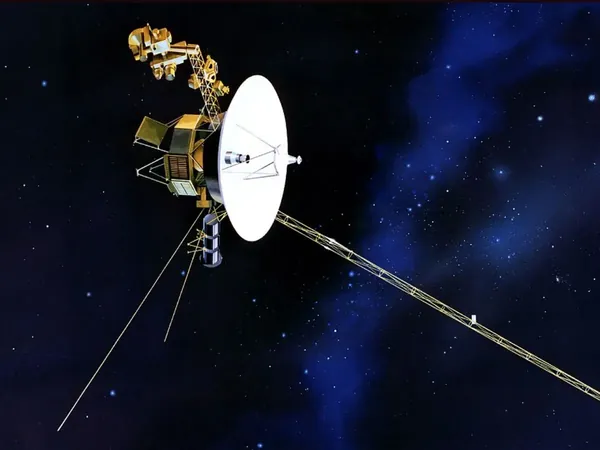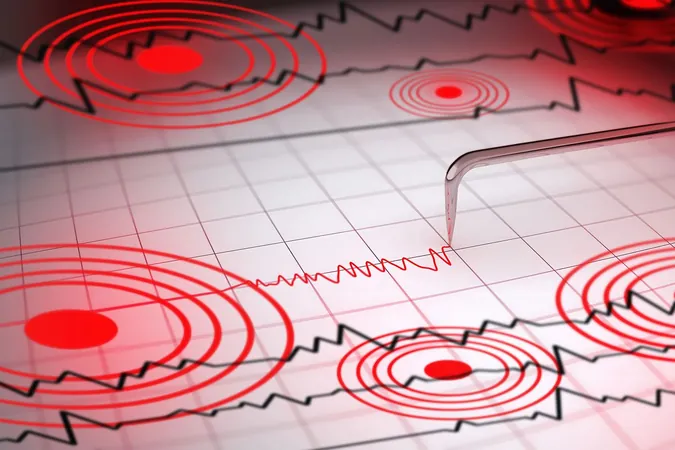
Voyager 1’s Pulsar Map: Humanity’s Cosmic GPS to the Stars
2025-08-31
Author: Liam
A Journey Through Space: The Voyager 1 Mission
Launched in 1977, Voyager 1 is not just a probe; it’s a time capsule carrying a Golden Record filled with the sounds of Earth and a mesmerizing cosmic map. This map ingeniously utilizes pulsars—rapidly spinning neutron stars that serve as celestial waypoints—to illuminate the path back to our home planet for any curious extraterrestrial life that might stumble upon it.
What Are Pulsars?
Pulsars are the remnants of once-mighty stars that exploded in supernovae, collapsing into neutron stars that spin at breakneck speeds. As they rotate, they emit powerful beams of radio waves and X-rays, akin to interstellar lighthouses. Their pulse emissions are so consistent that scientists have likened them to the ticking of an atomic clock.
Navigating the Cosmos with Pulsar Signatures
Just like GPS on Earth relies on satellite signals to help pinpoint your location, pulsars offer a form of navigation in the depths of space. Each pulsar boasts a unique "fingerprint"—its specific rotation period and pulse signature—making it identifiable from any corner of the galaxy.
The Golden Record's Map of the Cosmos
On the cover of Voyager’s Golden Record, NASA has etched a pulsar map showcasing 14 distinct pulsars surrounding the Sun. Each pulsar is represented with its rotation period cleverly encoded in binary. Should an alien civilization discover Voyager, they could use this map to trace the pulsar signals back to locate our solar system.
Reliable Cosmic Markers for Millennia
Pulses from these neutron stars exhibit an astonishing level of stability, allowing for the detection of even minuscule changes over the span of millions of years. This remarkable consistency makes them ideal markers for cosmic navigation, enabling both scientists on Earth and potential alien astronomers to locate Voyager with incredible precision.
A Timeless Connection to Humanity
Unlike planets and stars that drift significantly over vast cosmic epochs, pulsars maintain steady spin rates for millions of years. Even as they gradually slow down, the predictions of their alterations can be calculated. This means that Voyager’s pulsar map could remain functional for civilizations that arise millions of years into the future.
A Beacon of Humanity Across the Stars
By incorporating pulsars as reference points, Voyager carries an elegant message of humanity’s “cosmic home address” to the far reaches of the universe. Whether or not intelligent beings ever find it, this pulsar map showcases the ingenious way humans have used the very beacons of the universe to declare our existence among the stars.









 Brasil (PT)
Brasil (PT)
 Canada (EN)
Canada (EN)
 Chile (ES)
Chile (ES)
 Česko (CS)
Česko (CS)
 대한민국 (KO)
대한민국 (KO)
 España (ES)
España (ES)
 France (FR)
France (FR)
 Hong Kong (EN)
Hong Kong (EN)
 Italia (IT)
Italia (IT)
 日本 (JA)
日本 (JA)
 Magyarország (HU)
Magyarország (HU)
 Norge (NO)
Norge (NO)
 Polska (PL)
Polska (PL)
 Schweiz (DE)
Schweiz (DE)
 Singapore (EN)
Singapore (EN)
 Sverige (SV)
Sverige (SV)
 Suomi (FI)
Suomi (FI)
 Türkiye (TR)
Türkiye (TR)
 الإمارات العربية المتحدة (AR)
الإمارات العربية المتحدة (AR)